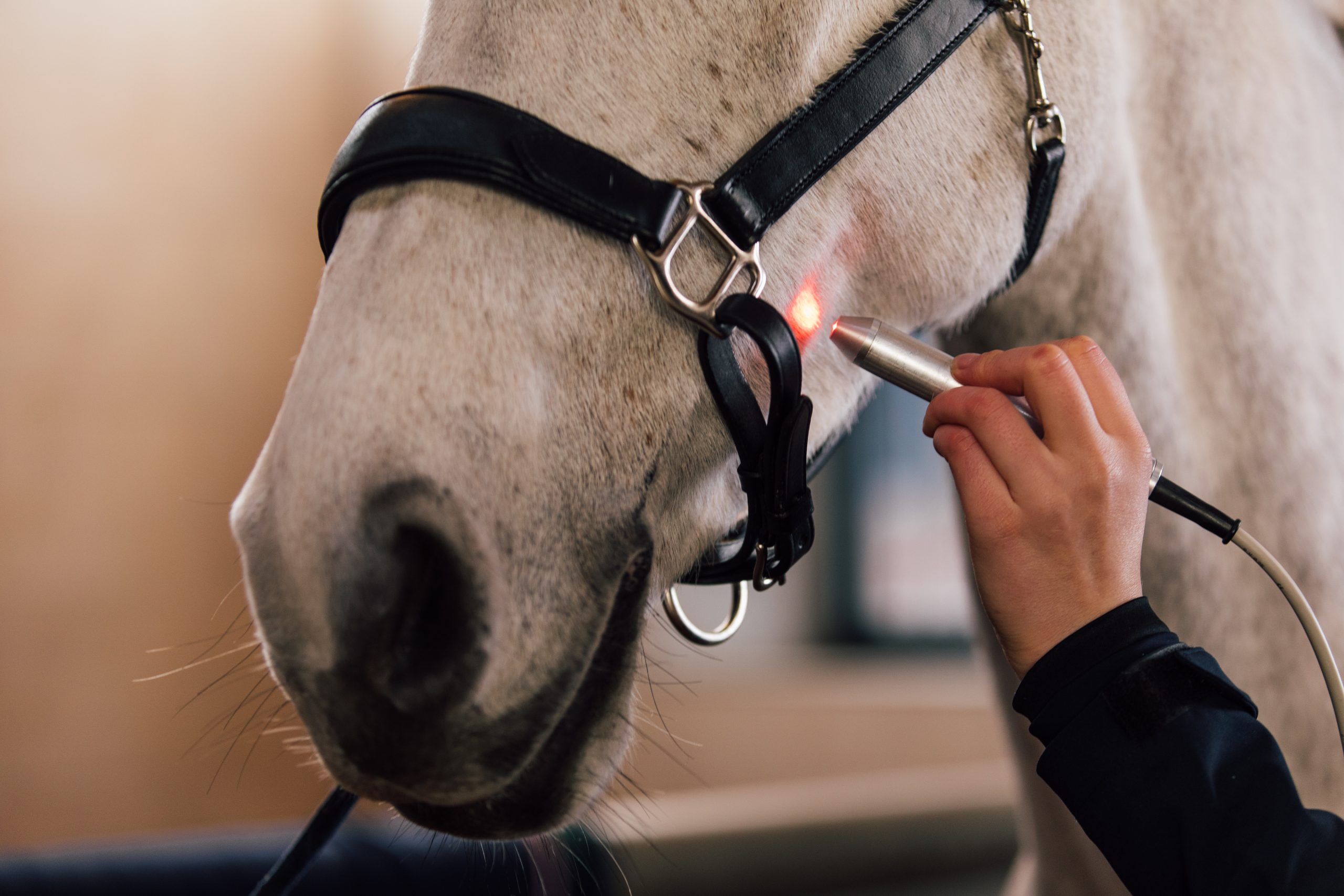Equine Therapy for Children: Psychological and Behavior Assistance Explained
Equine Therapy for Children: Psychological and Behavior Assistance Explained
Blog Article
Assessing the Efficiency of Laser Treatment in Horse Treatment for Injury Rehabilitation
The examination of laser treatment's efficiency in equine injury recovery pivots on multiple aspects, including recovery time, pain mitigation, and tissue regeneration. Veterinarians frequently observe remarkable outcomes with laser therapy compared to standard techniques, positioning it as a critical element in equine care. Equine Therapy.

Comprehending Laser Therapy
Laser therapy has actually ended up being a crucial device in veterinary medicine, especially in the treatment of equine conditions. Recognized for its non-invasive nature and efficiency, laser treatment includes the application of particular wavelengths of light to stimulate tissue repair work and decrease inflammation. This restorative method is increasingly favored for its capability to accelerate the recovery procedure in steeds dealing with a selection of bone and joint injuries and persistent problems.
The key device behind laser treatment is its ability to enhance cellular functions. In addition, laser therapy promotes vasodilation, enhancing blood flow and oxygen shipment to damaged cells, hence expediting recuperation.
In equine medication, laser therapy is especially valuable for problems such as tendonitis, osteoarthritis, and injury healing. The strategy is admired for its pain-relieving homes, allowing horses to gain back flexibility and function extra swiftly. Vets additionally appreciate its minimal adverse effects contrasted to various other treatment modalities, making it a dependable and secure choice for equine care.
How Laser Treatment Works
To understand exactly how laser treatment functions, it is necessary to delve into the interaction between light power and biological tissues. Laser therapy, likewise called Low-Level Laser Treatment (LLLT) or photobiomodulation, utilizes specific wavelengths of light to pass through cells and stimulate cellular procedures. The system depends upon the absorption of photons by cell chromophores, mainly within the mitochondria, which are important for power production.
Upon absorption, these photons set off a series of biochemical adjustments, improving mitochondrial feature and bring about boosted adenosine triphosphate (ATP) manufacturing. This increase in ATP increases mobile metabolism, promoting tissue repair service and regrowth. Additionally, laser treatment regulates inflammatory responses by affecting cytokine levels and minimizing oxidative anxiety, consequently relieving discomfort and swelling.
An additional considerable aspect of laser treatment is its role in boosting microcirculation. The treatment advertises vasodilation, boosting blood flow and oxygen delivery to broken tissues. This facilitates the removal of cellular particles and sustains the spreading of fibroblasts and collagen synthesis, essential for wound healing.
Professional Evidence
The effectiveness of laser therapy in equine therapy has actually been corroborated through numerous scientific researches, showcasing its healing prospective throughout a variety of conditions. A research study performed by Turner et al. (2012) demonstrated that horses treated with low-level laser therapy (LLLT) for ligament injuries displayed accelerated recovery compared to those obtaining standard treatments.
Similarly, research by Johnson and associates (2015) concentrated on equine muscle mass injuries, exposing that laser treatment substantially accelerated muscle fiber regrowth and reduced muscle stiffness. These findings were proven by histological analyses showing improved muscle cells organization. Medical assessments have revealed that laser treatment can minimize chronic conditions such as osteo arthritis. A research by Smith et al. (2018) reported that equines Visit Your URL with osteoarthritic joints experienced noteworthy pain alleviation and boosted variety of motion following a routine of laser therapy sessions.
Vet Insights
Veterinary specialists have increasingly acknowledged the value of laser treatment in equine therapy, mentioning both empirical proof and firsthand experience. Dr. Jane Smith, a leading equine veterinarian, keeps in mind that laser therapy has actually shown impressive effectiveness in lowering inflammation and increasing tissue fixing. "In my practice, I have actually observed faster recovery times in steeds treated with laser therapy contrasted to conventional approaches," she states. This belief is resembled by Dr. John Doe, who highlights that laser treatment offers a non-invasive option with marginal adverse effects, making it specifically suited for equine clients.
Veterinarians also appreciate the versatility of laser therapy. She points out that laser treatment can be customized to the details demands of each steed, making certain optimum end results.

Practical Considerations
An essential element of carrying out laser treatment in equine treatment entails recognizing the functional considerations that guarantee its efficacy and safety and security. It is crucial to pick the suitable laser tool, as various kinds differ in wavelength, power, and infiltration depth (Equine Therapy). Veterinarians have to be skilled in these criteria to tailor therapy protocols successfully per injury type
In addition, the frequency and period of laser treatment sessions need cautious preparation to make best use of therapeutic advantages while minimizing any type of possible adverse impacts. Constant monitoring of the equine's response to treatment can lead necessary modifications in the treatment routine. Establishing a risk-free website link and regulated setting during treatments is likewise necessary to prevent unintentional direct exposure to laser emissions, which can damage both the horse and the handler.
Training and accreditation of employees carrying out laser treatment are paramount to guarantee find out here appropriate method and to promote safety and security standards. Additionally, maintaining accurate records of each session, including laser settings and observed results, is crucial for reviewing the total performance of the therapy and for making data-driven choices.
Verdict
Laser treatment has actually arised as a reliable method in equine injury recovery, supplying considerable benefits in healing time, pain relief, and cells recovery. Professional researches emphasize considerable enhancements in conditions such as tendonitis and osteoarthritis, attributed to boosted mobile feature and enhanced ATP production. Veterinarian observations corroborate these searchings for, highlighting remarkable results compared to standard therapies. For optimal outcomes, continual tracking and personalized treatment methods stay crucial in leveraging the complete capacity of laser therapy in equine treatment.
Report this page